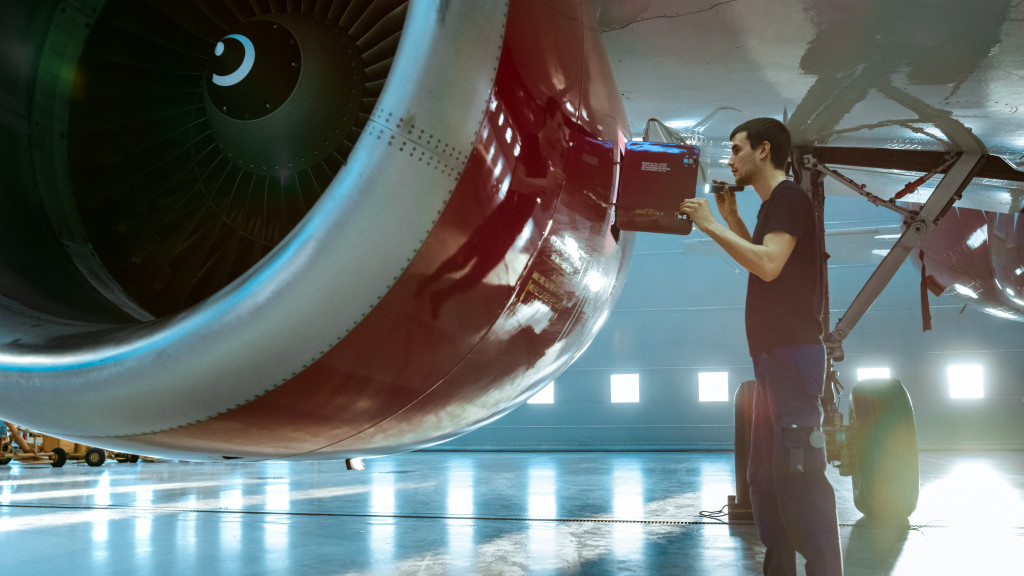- Remote diagnostics can be used to monitor fuel levels, engine performance, air speed, and altitude in real time.
- Pushback tugs are now equipped with sensors to ensure they are operated safely and efficiently.
- 3D printing can create complex parts quickly and inexpensively for aircraft.
- Virtual and augmented reality are being used to provide immersive training experiences.
Keeping an aircraft in excellent condition isn’t easy—it takes a lot of time, money, and effort. But with the help of modern technology, aircraft owners can now make maintenance and repairs more effortless than ever before. Here’s a look at some of the ways that new technology is revolutionizing aviation maintenance.
Remote Diagnostics
Thanks to remote diagnostics, aircraft owners can get real-time data about the condition of their planes without having to be physically present. This data can help maintainers spot potential problems early on and diagnose them quickly, which saves time and money in the long run. Here are some factors you can now check remotely:
Fuel Levels
The use of remote diagnostics to monitor fuel levels is an invaluable tool for aircraft maintenance. Fuel levels can determine the performance and efficiency of an aircraft, as well as alert owners to potential problems. By monitoring in real-time, maintainers can identify when refueling is necessary, how much fuel will be needed, and if the fuel tank is leaking.
Engine Performance
Modern technology allows maintainers to monitor engine performance more accurately than ever before. This includes tracking the RPMs of an aircraft’s engines, which can help diagnose any mechanical or electrical issues that could be causing reduced performance. With this data, owners can quickly identify and fix problems with their aircraft’s engines before they become a bigger issue.
Air Speed
The air speed of an aircraft can be monitored remotely to keep track of its performance and efficiency. This data is beneficial in identifying any problems with the plane’s control surfaces, such as if a trim setting has been incorrectly adjusted or if the flaps are not operating correctly.
Altitude
The altitude of an aircraft can also be monitored remotely, which allows maintainers to track the performance of the plane at different heights. By monitoring this data, owners can adjust settings to ensure optimal engine performance and safety while in flight.

Pushback Tugs
Pushback tugs are one of the most critical pieces of equipment in an airport, but they can be dangerous if not used correctly. However, modern technology is making it easier for maintainers to use durable aircraft tugs safely and efficiently.
Newer models are equipped with sensors that can detect when the aircraft’s nose wheel is too close to the tug, as well as when the aircraft has been pushed back too far. This helps maintainers safely and accurately position the plane on the tarmac without any risk of damage or injury.
Moreover, some more advanced tugs can now be operated remotely. This allows maintainers to maneuver the aircraft without needing to enter the tarmac and perform tasks from a safe distance.
3D Printing
3D printing has become increasingly popular in recent years due to its ability to create complex parts quickly and inexpensively. The aerospace industry has been quick to adopt this technology for making custom parts for aircraft.
From small components like nuts and bolts to significant pieces like fuselage sections or wings, 3D printing has been used to manufacture parts for all types of aircraft. This technology eliminates the need to order and wait for custom parts, which saves time and money in the long run.
3D printing can also be used for prototyping new designs or conducting research into new materials that could potentially reduce maintenance costs over the long term. For starters, research is being done into 3D printing with composite materials, which have lighter weights and better strength-to-weight ratios than traditional metals.

Virtual and Augmented Reality
Virtual and augmented reality (VR/AR) are increasingly being used for aircraft maintenance. This technology allows maintainers to train for complex tasks in a simulated environment before attempting them on the actual aircraft.
It also provides an interactive 3D model of the aircraft that can be used to identify hard-to-reach components or inspect complex parts more closely. Augmented reality (AR) can give the maintainers real-time data about the plane, as well as step-by-step instructions for completing repairs and maintenance tasks.
Meanwhile, virtual reality (VR) can be used to provide immersive training experiences that allow maintainers to practice their skills without needing to access the actual aircraft.
The latest advancements in technology are making aircraft maintenance easier, faster, and more cost-effective for owners. By leveraging these technologies, maintainers can now keep their aircraft in top condition without having to sacrifice safety, performance, or efficiency. With the help of technology, aircraft owners can now rest assured that their planes are in great shape and ready for the next flight.
